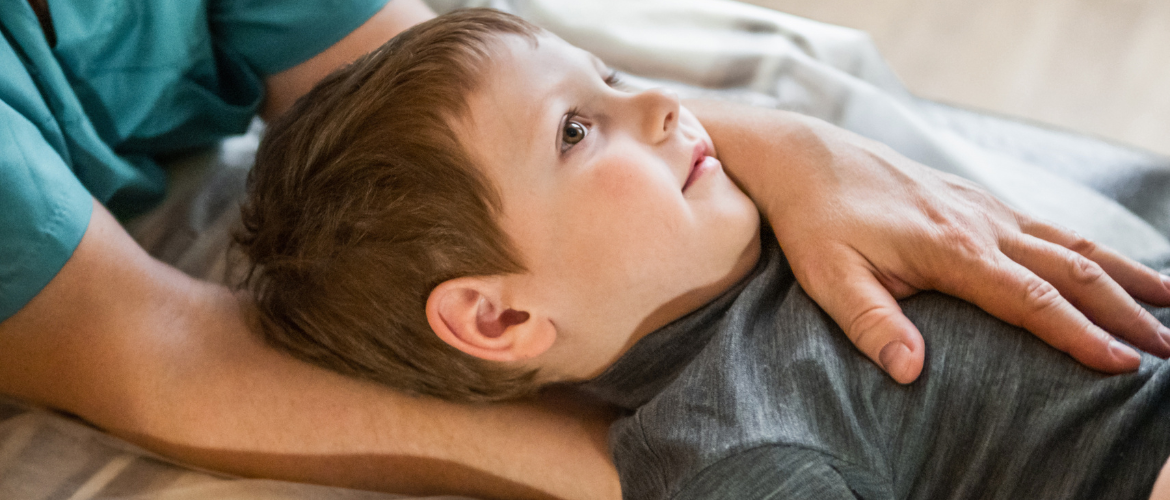
Authors: Mekka Garcia, MD, NYU Grossman School of Medicine
Alison L. Christy, MD, PhD , Providence Pediatric Neurology at St. Vincent Medical Center—Portland, Oregon
Reviewed: September 2022
SUMMARY
CADASIL (Cerebral autosomal dominant arteriopathy with subcortical infarcts and leukoencephalopathy) is a rare genetic disorder. It causes blood vessels to thicken. This blocks the flow of blood to the brain.
CADASIL affects about 2 to 5 in every 100,000 people. The following vary between individuals:
- Age of onset
- Severity
- Symptoms
As a result, it is often misdiagnosed or undiagnosed.
There is no cure. However, supportive care is available.
JUMP TO
Disorder Overview
DESCRIPTION
CADASIL results from an abnormality in a particular gene. The gene is called NOTCH3. It is located on chromosome 19. The usual symptoms are:
- Migraines (painful headaches)
- Small strokes (called infarcts)
CADASIL stands for “cerebral autosomal dominant arteriopathy with subcortical infarcts and leukoencephalopathy”. It can be understood as follows:
- Cerebral: This refers to the brain.
- Autosomal dominant: This affects how a disease can be inherited. If either parent has one disease-causing gene, there is a 50% chance their children will inherit the disease.
- Arteriopathy: This refers to a disease of the vessels that carry blood from the heart.
- Subcortical: This term means the deeper areas of the brain. They are supplied by tiny blood vessels.
- Infarcts: An infarct is also known as a stroke. It results from decreased blood flow to a certain area of the brain. This causes cells to die.
- Leukoencephalopathy: This refers to a disease that affects the white matter of the brain. The deeper areas of the brain are called white matter.


SIGNS AND SYMPTOMS
These can vary between individuals:
- Age of onset
- Severity
- Symptoms
Symptoms can include:
Headache.
Migraine headaches are common in CADASIL. They involve:
- Throbbing pain
- Nausea
- Sensitivity to light and sound
Stroke.
Decreased blood flow to a specific area of the brain causes a stroke. Cells in that area begin to die. Sometimes small strokes with CADASIL will not cause any symptoms. However, they can be seen in pictures of the brain.
Seizures.
A seizure is a burst of electrical activity in the brain. It causes the body to behave abnormally.
Dementia.
Psychiatric problems.
CAUSES
CADASIL is caused by a change in the NOTCH3 gene. This gene is located on chromosome 19. It produces the NOTCH3 receptor.
In CADASIL, a change in the NOTCH3 receptor causes cell material to build up. This occurs in the tiny blood vessels of the brain.
The build-up blocks blood vessels. The blockage increases the risk of a small stroke. This particularly applies to the white matter or deeper areas of the brain.
About half the time, the abnormal NOTCH3 gene is passed from a parent to their child.


LABORATORY INVESTIGATIONS
The following are key to diagnosis:
- A thorough history
- A clinical examination
- Blood tests
Some methods of diagnosis include:
Genetic testing.
Magnetic resonance imaging (MRI).
Neuropsychological testing.


TREATMENT AND THERAPIES
Currently, there is no cure for CADASIL. However, supportive care is available. Care includes:
- Analgesics. These are pain medications that can help with headaches. They may include:
-
- Acetaminophen
- Non-steroidal anti-inflammatory drugs (NSAIDs)
- Aspirin. A small daily dose of aspirin reduces the risk of stroke.
- Psychological support. This can include:
-
- A social worker
- A psychiatrist
- A therapist
- Genetic counseling
- Medications that aid with behavioral issues. For example, medications can help with depression and anxiety. These include:
-
- Selective serotonin reuptake inhibitors (SSRIs)
- Serotonin-norepinephrine reuptake inhibitors (SNRIs)


OUTLOOK
The outlook for CADASIL is variable. Some people will have only mild symptoms. They may just have a headache. Others may develop severe memory and cognitive problems. Symptoms usually worsen slowly over time.
People with CADASIL have a younger age of onset of stroke and death compared to the general population.
CADASIL increases a person’s risk of stroke. So, interventions that decrease stroke risk are very important. Such interventions include smoking cessation and managing high blood pressure.
RELATED DISORDERS
One disorder with similar symptoms is cerebral autosomal recessive arteriopathy with subcortical infarcts and leukoencephalopathy (CARASIL).
RESOURCES
The mission of cureCADASIL is to raise awareness of CADASIL, ensuring it will be universally recognized and understood by the medical community, enabling patients to be correctly diagnosed. They are dedicated to uniting patients and the medical community towards the common goal of treatments and ultimately a cure for this rare genetic disease. CureCADASIL provides a Family Registry, which is a forum for CADASIL patients and families from all over the world to share their personal experience with CADASIL.


Child Neurology Foundation (CNF) solicits resources from the community to be included on this webpage through an application process. CNF reserves the right to remove entities at any time if information is deemed inappropriate or inconsistent with the mission, vision, and values of CNF.
Research
ClinicalTrials.gov for CADASIL (birth to 17 years).
These are clinical trials that are recruiting or will be recruiting. Updates are made daily, so you are encouraged to check back frequently.
ClinicalTrials.gov is a database of privately and publicly funded clinical studies conducted around the world. This is a resource provided by the U.S. National Library of Medicine (NLM), which is an institute within the National Institutes of Health (NIH). Listing a study does not mean it has been evaluated by the U.S. Federal Government. Please read the NLM disclaimer for details.
Before participating in a study, you are encouraged to talk to your health care provider and learn about the risks and potential benefits.
Family Stories
CureCADASIL shares stories by CADASIL individuals and families on their journey with this rare genetic disease on their CADASIL Family Stories page.
The information in the CNF Child Neurology Disorder Directory is not intended to provide diagnosis, treatment, or medical advice and should not be considered a substitute for advice from a healthcare professional. Content provided is for informational purposes only. CNF is not responsible for actions taken based on the information included on this webpage. Please consult with a physician or other healthcare professional regarding any medical or health related diagnosis or treatment options.
References
Coupland K, Lendahl U, Karlström H. Role of NOTCH3 Mutations in the Cerebral Small Vessel Disease Cerebral Autosomal Dominant Arteriopathy With Subcortical Infarcts and Leukoencephalopathy. Stroke. 2018 Nov;49(11):2793-2800. https://doi.org/10.1161/STROKEAHA.118.021560. PMID: 30355220.
Ferrante EA, Cudrici CD, Boehm M. CADASIL: new advances in basic science and clinical perspectives. Curr Opin Hematol. 2019 May;26(3):193-198. https://doi.org/10.1097/MOH.0000000000000497. PMID: 30855338; PMCID: PMC7672534.
Gailani G, Robertson NP. Clinical patterns in CADASIL. J Neurol. 2022 Aug;269(8):4575-4577. https://doi.org/10.1007/s00415-022-11261-1. Epub 2022 Jul 14. PMID: 35833984; PMCID: PMC9293818.
Mizuno T, Mizuta I, Watanabe-Hosomi A, Mukai M, Koizumi T. Clinical and Genetic Aspects of CADASIL. Front Aging Neurosci. 2020 May 7;12:91. https://doi.org/10.3389/fnagi.2020.00091. PMID: 32457593; PMCID: PMC7224236.
Wang MM. CADASIL. Handb Clin Neurol. 2018;148:733-743. https://doi.org/10.1016/B978-0-444-64076-5.00047-8. PMID: 29478611.
Thank you to our 2023 Disorder Directory partners:





